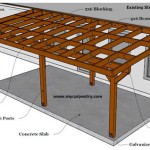Replacing Concrete Patio With Pavers: A Comprehensive Guide
Concrete patios, while initially cost-effective, often suffer from cracking, staining, and a generally utilitarian appearance. Pavers, on the other hand, offer enhanced aesthetics, durability, and design flexibility. Replacing a concrete patio with pavers presents an opportunity to enhance the outdoor living space, increase property value, and create a more visually appealing and functional area. This article will provide a detailed overview of the process, considerations, and benefits associated with such a replacement.
Before embarking on this project, it's critical to understand the scope of work involved. This includes assessing the existing concrete patio, planning the new paver design, gathering necessary materials and tools, and completing the installation. Proper planning and execution are vital to achieving a successful and long-lasting paver patio.
Assessing the Existing Concrete Patio
The initial step involves thoroughly examining the existing concrete patio. This assessment should identify any existing cracks, uneven surfaces, or drainage issues. Understanding these existing conditions is crucial for determining the necessary preparation steps before paver installation. Significant cracking or heaving in the concrete may indicate underlying soil issues that need to be addressed to prevent similar problems from affecting the new paver patio.
Furthermore, the dimensions of the concrete patio should be accurately measured to determine the required amount of pavers and base materials. Creating a detailed sketch of the patio, including any existing features like steps, retaining walls, or planting beds, is highly recommended. This sketch will serve as a visual aid during the design and installation phases.
Consider the height of the existing concrete relative to adjacent surfaces, such as the house foundation, walkways, or lawn. Ideally, the finished height of the paver patio should be slightly below the level of the house foundation to ensure proper drainage away from the building. Adjustments may be necessary to the base material depth to achieve the desired finished height.
Finally, determine the method for concrete removal. Smaller patios may be broken up manually with a sledgehammer and hand tools. Larger patios may require the use of heavy machinery, such as a jackhammer or concrete saw, to expedite the removal process. Consider the accessibility of the patio area for machinery and the potential impact on surrounding landscaping.
Planning the Paver Design and Material Selection
The design phase is crucial for achieving the desired aesthetic and functionality of the paver patio. Consider the overall style of the house and surrounding landscape when selecting paver colors, shapes, and patterns. A variety of paver styles are available, ranging from traditional brick-like pavers to modern interlocking designs. The choice of paver style will significantly influence the overall appearance of the patio.
Paver color should complement the existing color palette of the house and landscape. Neutral colors, such as gray, beige, and brown, are versatile and blend well with a variety of architectural styles. Accent colors can be incorporated to create visual interest and define specific areas of the patio.
Paver patterns can dramatically affect the appearance of the patio. Common patterns include running bond, herringbone, basketweave, and circular patterns. The choice of pattern depends on personal preference and the desired visual effect. More complex patterns may require more cutting and fitting, increasing the installation time and cost.
Beyond aesthetics, consider the functional aspects of the paver design. Plan for adequate drainage to prevent water from pooling on the patio surface. This may involve incorporating a slight slope to direct water away from the house or installing a drainage system, such as a French drain. Also, consider the placement of furniture, planters, and other outdoor features when planning the paver layout.
Material selection extends beyond the pavers themselves. A proper base is essential for ensuring the longevity and stability of the paver patio. Typically, a compacted layer of gravel or crushed stone is used as the base material. The depth of the base layer depends on the soil conditions and the anticipated load on the patio. A layer of sand is then placed on top of the base to provide a level surface for the pavers.
The Installation Process: From Demolition to Finishing Touches
The installation process begins with the demolition of the existing concrete patio. This involves breaking up the concrete into manageable pieces and removing them from the site. Proper safety precautions should be taken during demolition, including wearing safety glasses, gloves, and hearing protection. Consider renting a dumpster or arranging for waste disposal services to handle the concrete debris.
Once the concrete is removed, the underlying soil should be inspected and prepared. Remove any loose soil, roots, or debris. If the soil is unstable or poorly drained, it may be necessary to excavate deeper and replace the existing soil with compacted gravel. This will provide a more stable base for the paver patio.
Next, the base material is installed in layers and compacted using a plate compactor. Each layer should be evenly distributed and thoroughly compacted before adding the next layer. The base layer should extend beyond the edge of the patio to provide support for the pavers and prevent them from shifting over time.
A layer of bedding sand is then spread over the compacted base material. The sand should be evenly distributed and screeded to create a smooth, level surface. The pavers are then carefully placed on the sand bed, following the chosen pattern. Use a rubber mallet to gently tap the pavers into place and ensure that they are level with each other.
After all the pavers are laid, edge restraints are installed to prevent the pavers from shifting or spreading. Edge restraints can be made of plastic, metal, or concrete. They should be securely anchored to the ground to provide adequate support. The gaps between the pavers are then filled with polymeric sand, which hardens when wetted to lock the pavers together and prevent weed growth.
Finally, the paver patio should be thoroughly cleaned to remove any excess sand or debris. A sealant can be applied to protect the pavers from staining and fading. Regular maintenance, such as sweeping and occasional cleaning, will help to keep the paver patio looking its best for years to come.
Replacing a concrete patio with pavers is a significant undertaking that requires careful planning and execution. However, the result is a beautiful and durable outdoor living space that will enhance the value and enjoyment of the property. While this article provides a comprehensive overview of the process, it is recommended to consult with a qualified landscape contractor or paver installer for professional advice and assistance, especially for larger or more complex projects. Moreover, local building codes and regulations should be consulted before commencing any work to ensure compliance. Proper research and planning may be the difference between a successful installation and costly problems later on.

How To Install Patio Pavers Over An Existing Concrete Slab

How To Cover A Concrete Patio With Pavers Diy Family Handyman

Diy How To Upgrade A 10x10 Concrete Patio With Pavers

Diy How To Upgrade A 10x10 Concrete Patio With Pavers

How To Tear Down That Concrete Patio

Advantages And Disadvantages Of Both Patio Pavers Stamped Concrete

How To Install Patio Pavers Over An Existing Concrete Slab

Why Installing Pavers Over Concrete Is A Bad Idea Pavertime

Diy How To Upgrade A 10x10 Concrete Patio With Pavers

Paver Restoration Breathe New Life Into Your Old Patio Or Walkway








